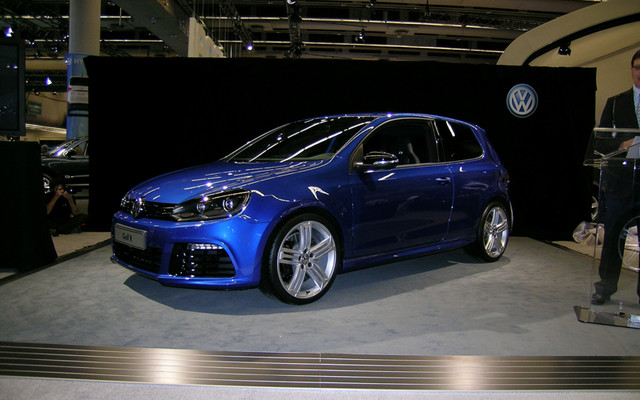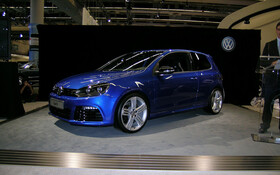North American Premiere of the Golf R Concept
Volkswagen Canada held the North American premiere of its "Top Golf" today at the Montreal International Auto Show. Named the Golf R Concept, Volkswagen unveiled this 3-door "Hot Hatch" that produces 265 HP and can accelerate from 0 to 100 km/h in 5.5 seconds while consuming only 8.4 litres of fuel per 100 kilometres(i) traveled to the automotive media.
"The new Golf R Concept is the "Top Golf" - the best in the overall combination of acceleration, top speed, fuel-economy, handling, performance, and distinctive features for a vehicle in the compact segment," announced John White, President and CEO of Volkswagen Group Canada Inc. at today's press conference. "Our commitment to leadership in the environment is matched with our drive to be leaders in innovation and technology. This automotive passion, even in an era of downsizing, still has something to do with power and performance."
On the heels of its world premiere last September at the IAA in Frankfurt, Germany, the Golf R Concept follows Volkswagen's strategy of creating premium performance package versions of some its models as R models. Other models available in Europe include the Passat R36, Touareg R50, and the Scirocco R.
R models are packaged with substantial upgrades which include: more powerful engines, advanced powertrains, suspension and steering modifications, stronger brakes, aerodynamic improvements, special sport seating, and unique exterior and interior aesthetic upgrades. This R model was conceptualized by Volkswagen Individual, Volkswagen's special customizing and tuning arm in Germany.
Driven by its 2.0 litre, 4-cylinder TSI direct engine gasoline engine that has a specific power of 133 HP per litre and a maximum of 258 lbs-ft of torque from 2,500 to 5,000 RPM, the Golf R Concept is capable of covering 1,000 metres (1 km) in 25.4 seconds and of reaching an electronically limited top speed of 250 km/h.
TSI Engine of the Golf R Concept
The EA113 series direct-injection gasoline engine is used in the new Golf R, with a turbocharger that makes it very flexible and variable right up into the highest performance ranges. The engine's power can be spontaneously summoned in the blink of an eye throughout its speed range. The engine also impressively underscores its potential acoustically, as well as visually: its two chrome tailpipes can be seen at the centre of the bumper under the diffuser integrated there - an "R trait".
The four-cylinder engine develops its tremendous propulsive power via a turbocharger (up to 1.2 bar boost pressure) with intercooling. The engine, with a weight of just 152 kilograms, is controlled by a fully electronic engine management system with E-Gas. The cylinders of the four-cylinder engine have been equipped with reinforcing bolts. Also designed to be stronger are the connecting rods, so that they can transfer the engine's high torque to the crankshaft. Last but not least, the cylinder block is also reinforced to handle the aggressive engine forces.
New all-wheel drive on the Golf R Concept
As standard equipment, the Golf R transfers the TSI's power to the road via the latest generation of Volkswagen's 4MOTION all-wheel drive system. The system underwent significant advanced development versus the previous version found in the Golf R32.
Above all, power transmission between the front and rear axles - especially the all-wheel differential that operates in an oil bath - exhibits clear advances. The most important one: Activation of the all-wheel differential no longer requires a difference in speeds between the front and rear axles. For the first time an electric pump is used to build pressure. The electric pump supplies oil to a hydraulic reservoir whose working pressure is 30 bar. A control module computes the ideal drive torque for the rear axle and controls, via a valve, to determine how much oil pressure is applied to the working pistons of the multi-plate clutch. The contact pressure at the clutch plates rises in proportion to the desired torque at the rear axle. The amount of torque that is transferred can be varied continuously with the magnitude of the pressure applied to the clutch plates. The system operates independent of slip since the system's working pressure is always available. When starting up and accelerating, this prevents spinning of the wheels at the front axle more effectively, since the control module regulates the torque distribution based on dynamic axle loads. In extreme cases, nearly 100 percent of the drive torque can be directed to the rear axle, resulting in further gains in active safety and dynamic performance.












